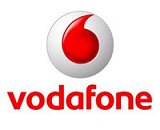Vodafone SWOT Analysis
 Vodafone SWOT Analysis.SWOT analysis is a technological tool through which strengths and weaknesses, as well as opportunities and threats of the business can be identified (Kotler et al, 2008). Strengths and weaknesses are considered to be internal factors affecting the company, whereas threats and opportunities are external factors.
Vodafone SWOT Analysis.SWOT analysis is a technological tool through which strengths and weaknesses, as well as opportunities and threats of the business can be identified (Kotler et al, 2008). Strengths and weaknesses are considered to be internal factors affecting the company, whereas threats and opportunities are external factors.
Vodafone’s leadership position in the market can be considered to be the main strength the company possesses, because due to this fact the company is better positioned to finance new projects and to introduce new services to the market. Moreover, Vodafone has a wide geographical reach and its network infrastructure is considered to be highly developed.
The main weakness Vodafone has relates to its centralised management system that can cause inflexibility in today’s highly competitive marketplace. Pang (2009) informs that customer churn rate is the degree at which companies are able to retain their current customers. High level of customer churn rate is another weakness Vodafone has. However this issue is not unique to Vodafone and has negative effects to many subscriber-based service model companies.
There are range of opportunities for Vodafone that if taken can improve its position in the marketplace. These opportunities include strengthening its position in new markets, forming strategic partnerships with technology and internet-related companies in order to increase the number of its services and the level of global presence of the company, and also focusing more in utilising 3G technologies.
Threats to the profitability and long-term growth of the company are the level of global competition intensifying even more, market saturation in developed countries, as well as the emergence of alternative telecommunications technology.
References
- Company Description, Vodafone Group Plc, Hoovers, Available at: http://www.hoovers.com/company/Vodafone_Group_Plc/cksxti-1.html Accessed February 12, 2011
- Kotler, P, Armstrong, G, Wong, V & Saunders, J, 2008, Marketing Defined. Principles of marketing (5th ed.), Prentice Hall
- Pang, S, 2009, Successful Service Design for Telecommunications, Wiley Publications
